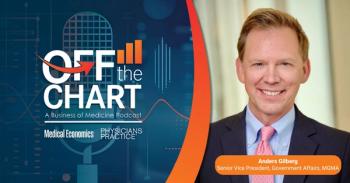
There is No Perfect State for Physicians to Practice
A new ranking of best states for physicians to practice by the AAPS has its limits, but provides interesting food for thought.
A report by Philip Eskew, DO, JD, MBA, published in the Winter 2014 Journal of American Physicians and Surgeons, a publication of the Association of American Physicians and Surgeons (AAPS),
• separately scored taxes: individual income, corporate income, sales, gross receipts, physician gross income, and various provider taxes;
• medical board actions (meaning, "tyranny");
• office-based surgical restrictions
• pilot maintenance-of-licensure efforts;
• in-office dispensing regulations;
• medical liability climate;
• continuing medical education (CME) requirements;
• whether the state elected to expand Medicaid; and
• certificate-of-need (CON) requirements.
There is an admitted observational bias. The AAPS is unashamedly focused upon state interference with physician autonomy. Ranked factors were assigned scores: +1 if pro-physician compared to other states, 0 if neutral, or -1 if anti-physician. Thus, the "best" state according to rank was South Dakota, with 8 positive and 0 negative. New Jersey was ranked "worst" with 0 positive and 9 negative. As ranked by the AAPS study:
Nothing happens in a vacuum. The ranking does not account, for example, the presence or absence of "paying customers" within a pro-physician state. A state with favorable medical malpractice liability damages laws, may also possess a very active, if not "hostile" medical board. This may be the bargain well struck for medical tort reform: "Pick your poison: A hostile medical board, or a horde of trial lawyers," Similarly, higher CME requirements may be the price physicians must pay to ward off mandatory maintenance of licensure.
Then too, because nothing happens in a vacuum, an absence of liability for medical malpractice damages, or lower income and professional taxes, does not mean everyone lives in a utopian state, reading Ayn Rand, under cloudless skies. A child with an iatrogenic brain injury, for example, who may be deprived of a damage award in one of the "physician-positive" states, does not disappear. The patient becomes a ward of the state which doesn't raise enough taxes under Medicare and Medicaid. We thus, "nationalize" the debt, but raise no money to pay the bill.
States which have refused to expand Medicaid actually do protect most physicians from Medicaid's absurdly low reimbursement rates, while protecting the state's budget from bankruptcy. But the poor don't vanish. These people go without care until they become very ill, then appear at hospital emergency rooms, staffed by physicians working at hospitals. Under the
Naturally, if these problems were easily solved, they wouldn't be "problems." While the study has its limits, the work is fascinating, seems well intentioned, and well worth the read.
Newsletter
Optimize your practice with the Physicians Practice newsletter, offering management pearls, leadership tips, and business strategies tailored for practice administrators and physicians of any specialty.











